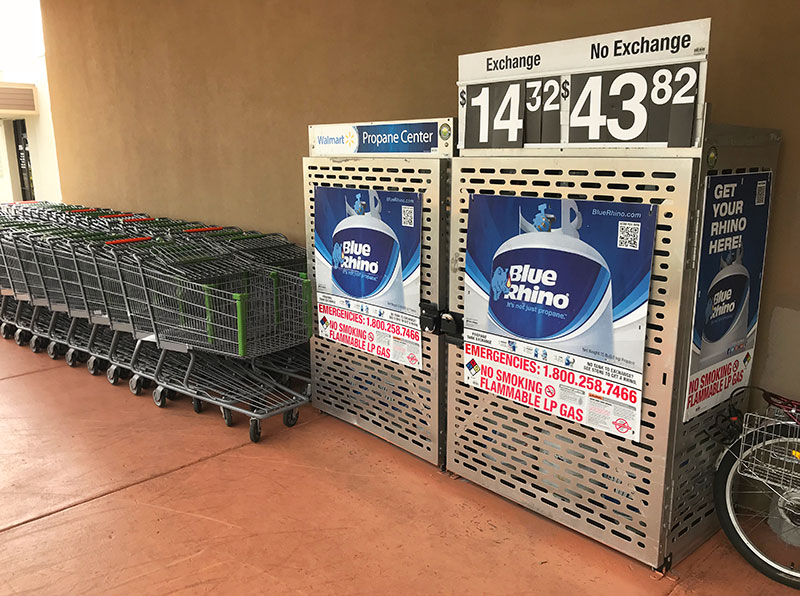There’s nothing quite like running out of propane in the middle of a dark, cold and windy night. On at least a half-dozen occasions over the past decade I have found myself outside in my jammies freezing my buttons off and changing propane tanks. Yeah, I said buttons.
In 2015 we installed a single hose propane regulator in our truck camper, not the standard two hose auto changeover regulator. We selected a single hose propane regulator because they are said to be more reliable, and they force you to keep better track of your propane tank levels. This is of little comfort at 2:00am in the middle of freezing nowhere.
Fortunately, it’s been quite some time since we have run out of propane in the middle of the night. As intended, we are much more aware of our propane levels now and make sure to switch our propane tanks and/or fill them long before the buttons drop. As soon as I sense the tanks are low, we get gas.
For the newbies among us, most of us eventually develop an awareness of our tank levels, propane levels, and battery levels. We might still check our monitors, but we pretty much know where they should be. It’s a truck camping zen thing; totally in tune with the tanks, becoming one with the batteries. You laugh, but this will happen to you – grasshopper!

With two 20-pound horizontal tanks, we have no choice but to locate propane filling stations. With horizontal tanks, there is no option to exchange tanks. In fact, the only exchangeable propane tanks are 20-pound vertical tanks. This is why I praise manufacturers in truck camper reviews for employing 20-pound vertical propane tanks in their designs. The versatility and convenience of 20-pound propane tanks is unbeatable.
However, exchanging propane tanks does have some downsides. For example, exchanged tanks cost more per propane gallon than refilling. One study pegged the exchange propane price at $5.75 per gallon. That compares to $3.99 or less at most propane refilling stations.
Another downside is capacity. Exchange propane tanks typically contain 15 pounds of propane. Put another way, exchange propane tanks are not filled to proper capacity as they are at a propane filling station.
Speaking of filling stations, we have filled propane at literally dozens of gas stations, hardware stores, co-ops, and dedicated propane stores all over the United States and Canada. We’ve had especially good luck filling propane at U-Haul stores across the United States. U-Haul stores charge by the gallon, not by the tank, and are usually easy to locate.
Filling propane is normally a good experience with an attendant who knows what he/she is doing and gets the job done in short order. Unfortunately, we have the occasional knucklehead that overfills despite our specific directions to the contrary. This can be solved by carefully bleeding of a little propane prior to installing the tank in your camper. Watch those attendants!
This week’s Question of the Week is, “Do you refill your truck camper propane tanks, or exchange them?”
This QOTW is now closed. Click here to see, “Propane Advice For Campers: Refill or Exchange“.
